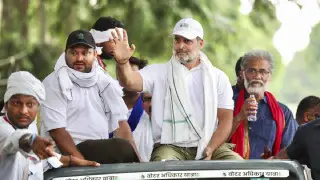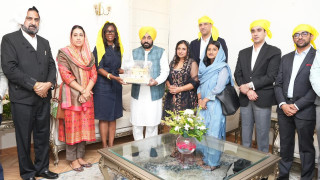
After the magnanimous success of ISRO’s Chandrayaan-3, Indian Space Research Organisation (ISRO) is now gearing to go all over the Sun.
The Aditya-L1 mission recently reported about its destination and the distance of its travel, which is said to be around 1.5 million kilometers to study the Sun.
India is getting ready to start a ground-breaking scientific venture. Over the following five years, the mission, a partnership between the Indian Space Research Organisation (ISRO) and other prestigious institutions, is expected to reveal new information about our nearest star.
🚀PSLV-C57/🛰️Aditya-L1 Mission:
— ISRO (@isro) August 28, 2023
The launch of Aditya-L1,
the first space-based Indian observatory to study the Sun ☀️, is scheduled for
🗓️September 2, 2023, at
🕛11:50 Hrs. IST from Sriharikota.
Citizens are invited to witness the launch from the Launch View Gallery at… pic.twitter.com/bjhM5mZNrx
The director of the Planetary Society, Raghunandan Kumar, spoke to the media, elaborating on the significance of the Sun mission and its ambitious scope. He said, “Aditya-L1 mission is going to undertake a 15-lakh-kilometer journey. After reaching a point, with the help of the 7 instruments, our country is going to study the Sun over a period of the next 5 years.”
VIDEO | “Aditya-L1 mission is going to undertake a 15-lakh kilometre long journey. After reaching a point, with the help of the 7 instruments, our country is going to study about the Sun over a period of next 5 years,” says Raghunandan kumar, Director at Planetary Society. pic.twitter.com/r7wFUFWFda
— Press Trust of India (@PTI_News) August 31, 2023
Aditya L1 is India’s first space mission to investigate the sun, and it is scheduled to launch on September 2. Aditya is the Hindi term for the sun. The spacecraft will be positioned in an orbit that circles the Sun-Earth system’s Lagrange point 1, or L1, where the gravitational influences of both bodies cancel one another out.

The objective of the mission is to continuously track solar activity and how it affects the space environment.
The carefully planned equipment that will gather essential data and photos of the Sun is essential to the mission’s success. By designing the primary payload, the Indian Institute of Astrophysics played a crucial role.
The Director of the Space Applications Centre (SAC/ISRO), Nilesh Desai, highlighted this collaboration, saying, “These payloads were not only prepared by the Indian Institute of Astrophysics, who have made the main payload, but other smaller institutes were roped in to deliver six other payloads. This is the uniqueness of this particular mission.”
VIDEO | Former ISRO scientist Nambi Narayanan explains the importance of India's first solar mission Aditya-L1 which will be launched on September 2 from Sriharikota spaceport.#AdityaL1 #ISRO pic.twitter.com/gqIE5BgLwn
— Press Trust of India (@PTI_News) August 28, 2023
The Aditya-L1 mission will start its in-depth investigation of the sun, which is anticipated to take four months. The data from the equipment on board will cover a wide range of topics, such as the magnetic field, corona, and emissions of the Sun.













Copyright © 2025 Top Indian News
